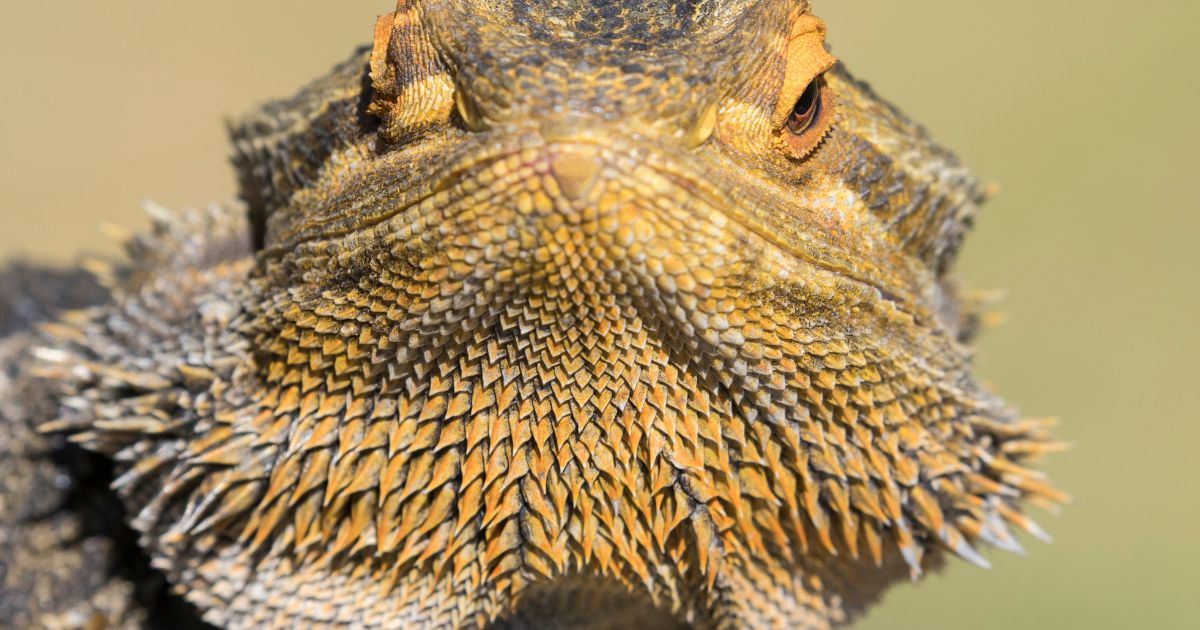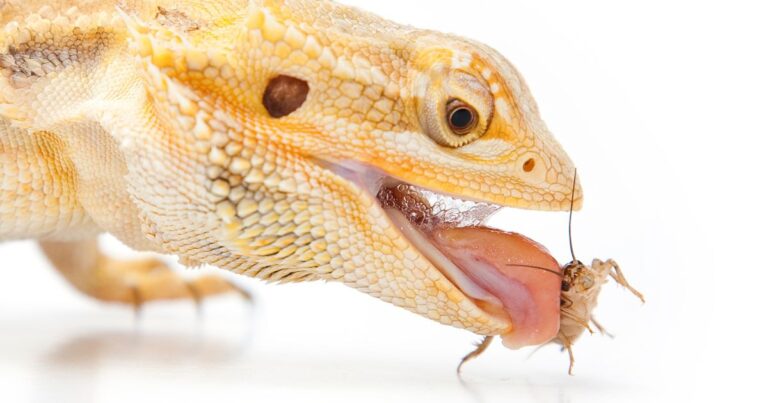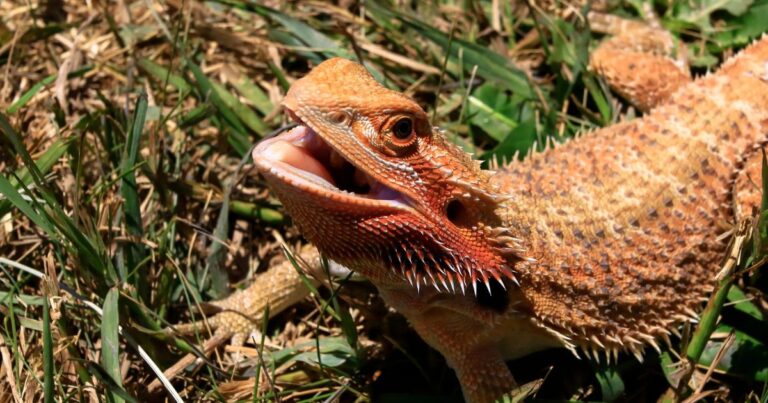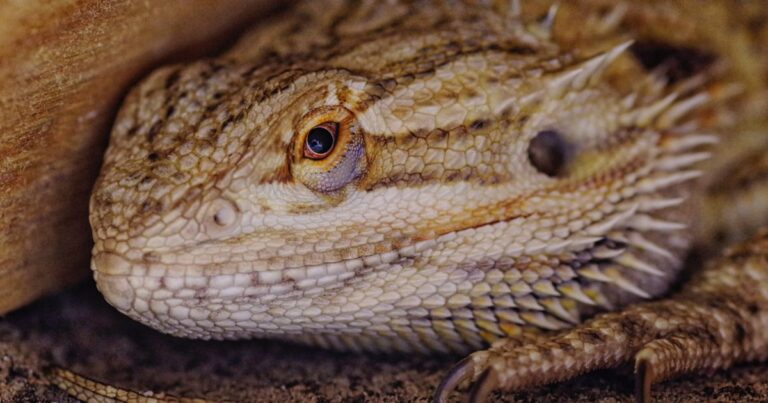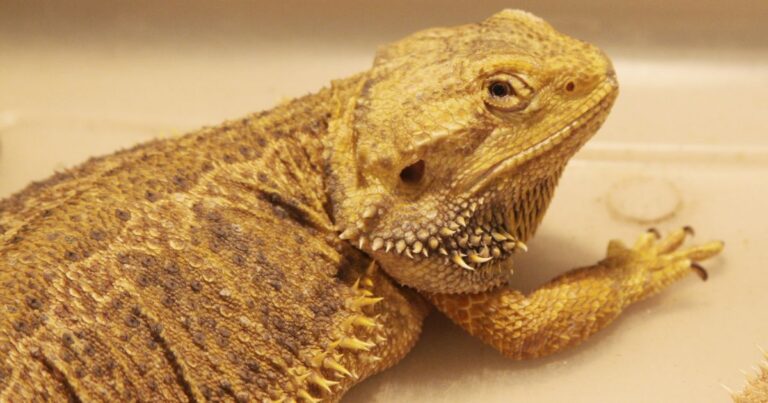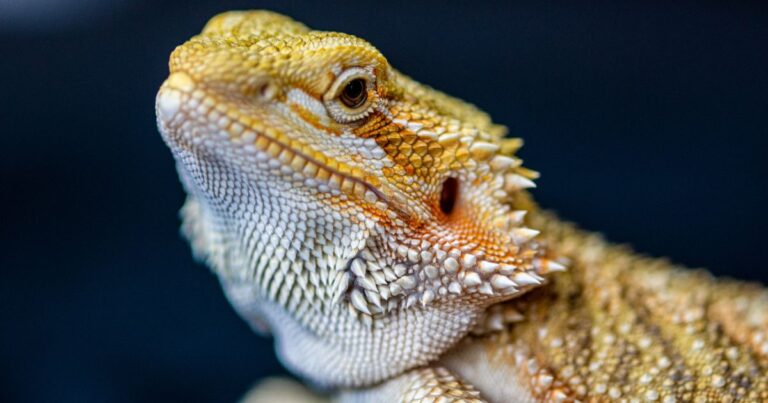Bearded Dragon Respiratory Health: A Breath of Fresh Air for Your Scaly Friend
Table of Contents
Bearded Dragon Respiratory Health
| Aspect | Details |
|---|---|
| Importance | Ensures overall health and happiness of the bearded dragon |
| Signs of Good Health | Regular breathing, clear nostrils, active behavior |
| Common Issues | Respiratory infections, allergies, colds |
| Causes | Poor ventilation, low temperatures, high humidity, dirty habitat |
| Prevention | Maintain right temperature and humidity, keep habitat clean and well-ventilated, provide balanced diet and fresh water |
| When to Consult a Vet | Fast breathing, lethargy, loss of appetite, open-mouth breathing, wheezing or clicking sounds |
Bearded dragon respiratory health is no laughing matter, folks! It’s all about keeping our scaly pals puffing and panting just right. Stick around as we explore this breath-taking topic, filled with tips, tricks, and dragon-sized doses of fun!
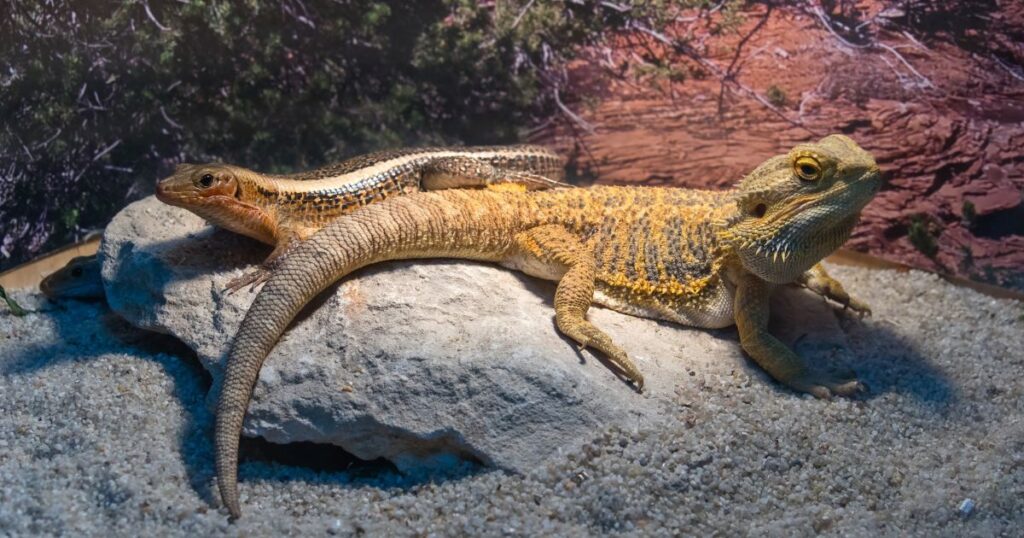
Introduction
Hey there, dragon aficionados! Just as we humans relish a breath of fresh air, our scaly pals, the bearded dragons, also need to breathe easy. That’s why we’re embarking on a journey into the world of bearded dragon respiratory health today. It’s a topic that’s as vital as the air we breathe, and yet, it’s often overlooked. But not today, not on our watch!
Our bearded buddies are tough, but even the toughest dragon needs a little care when it comes to their respiratory health.
From my escapades with Gilbert, my trusty bearded dragon sidekick, I’ve picked up a nugget or two about keeping our dragon buddies hale and hearty. It’s been a roller coaster ride, filled with laughter, a few scares, and a whole lot of learning. And today, I’m going to share some of that wisdom with you.
I believe it’s my responsibility to ensure Gilbert’s well-being, and that includes his respiratory health. While Gilbert has never had any respiratory issues, I’ve always been proactive about learning as much as I can. This knowledge not only helps me keep Gilbert healthy, but it also allows me to share useful information with other bearded dragon owners through my blog.
So, strap in, dragon lovers, as we set off on this adventure to ensure our bearded buddies are puffing and panting just right! It’s going to be a wild ride, filled with fascinating facts, handy tips, and of course, a few dragon tales. Ready? Let’s get started!
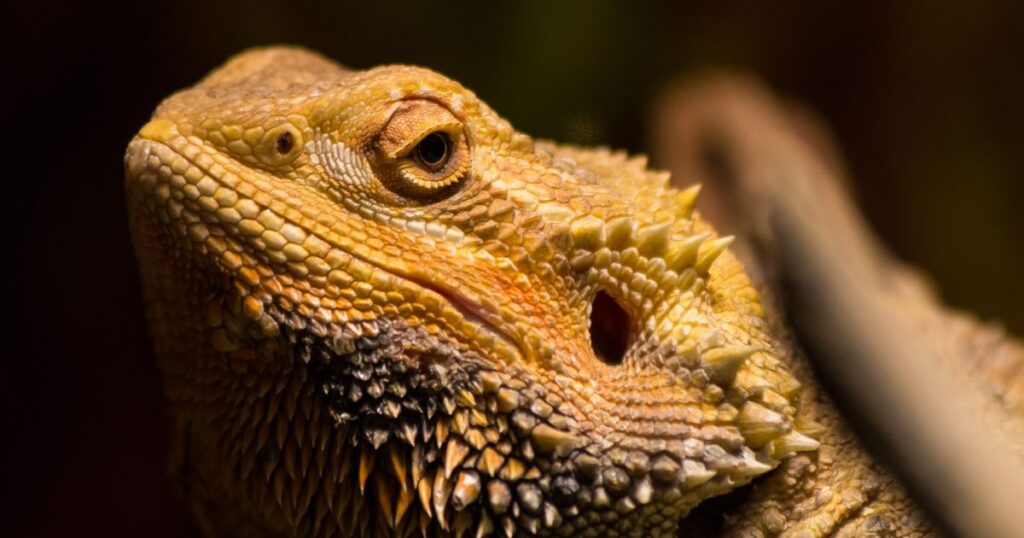
Understanding Respiratory Health in Bearded Dragons
When we say ‘respiratory health’ in bearded dragons, we’re talking about the huff and puff, the inhale and exhale. It’s about ensuring that every breath they take is as smooth as a glide in the sky. It’s about making sure their tiny lungs are working just as they should, free from any distress or disease.
A healthy dragon breathes easy, with no wheezing, gasping, or, heaven forbid, any funky nose bubbles! Their breaths are regular, their nostrils clear, and their behavior as lively as ever. If your dragon is puffing like a steam engine or gasping like a fish out of water, it’s time to sit up and take notice.
Keeping our dragon’s respiratory system in top shape is crucial, not just for their health, but also for their overall happiness. After all, a happy dragon is a healthy dragon, and a healthy dragon is, well, a joy forever!
Signs of Good Respiratory Health in Bearded Dragons
- Regular breathing
- Clear nostrils
- Active behavior
- Good appetite
- Interest in usual activities
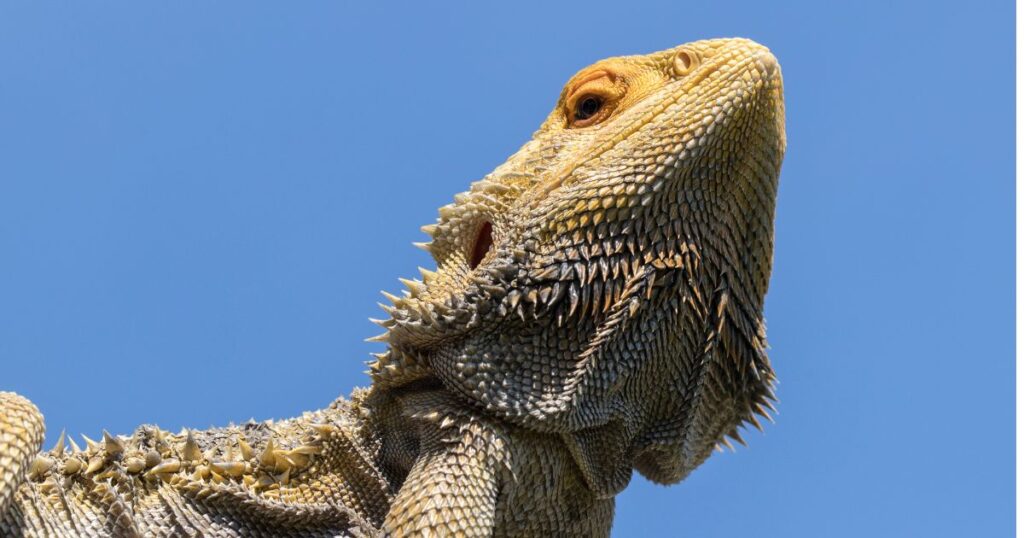
Common Respiratory Issues and Their Causes
| Respiratory Issue | Symptoms |
|---|---|
| Respiratory Infection | Wheezing, gasping, loss of appetite, lethargy |
| Allergies | Sneezing, watery eyes, skin irritation |
| Colds | Runny nose, sneezing, loss of appetite |
Now, our dragon pals are pretty tough, but sometimes, they can face some respiratory roadblocks. Just like us, they can catch a cold, develop an infection, or suffer from allergies. And while it’s not something we like to think about, it’s important to be aware of these issues.
From chilly habitats to dusty surroundings, various factors can make our dragons go ‘achoo!’ Poor ventilation, low temperatures, and high humidity can all lead to respiratory issues in bearded dragons. Even something as simple as a dirty tank can cause your dragon to wheeze and gasp.
There was this one time when Gilbert seemed a bit off. He wasn’t as active as usual, and I noticed he was breathing a bit faster. Now, he didn’t have a respiratory issue, but my knowledge on the topic helped me rule that out quickly. I adjusted his habitat’s temperature, and soon enough, he was his lively self again. It was a relief to know I could identify and respond to his needs promptly.
Being on the lookout for any signs of respiratory distress can make a world of difference in our dragon’s health. It’s all about being proactive, about catching the problem before it becomes a crisis. And trust me, when it comes to our scaly friends, a stitch in time really does save nine!
| Cause | Explanation |
|---|---|
| Poor Ventilation | Lack of fresh air can lead to respiratory issues |
| Low Temperatures | Cold environments can cause colds and respiratory infections |
| High Humidity | Excessive moisture can lead to fungal infections |
| Dirty Habitat | Bacteria and fungi thrive in dirty environments |
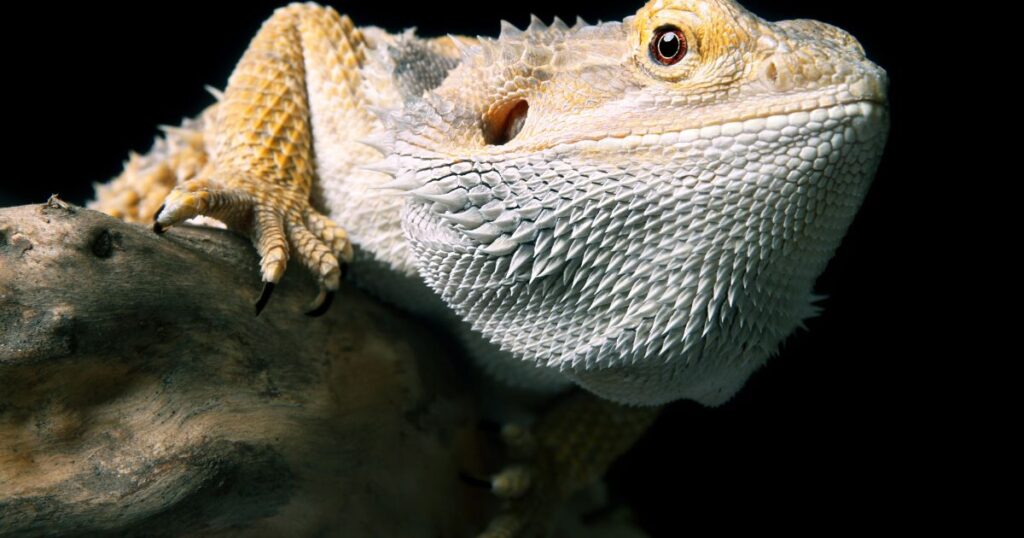
Identifying Respiratory Issues in Bearded Dragons
Spotting respiratory issues in our bearded buddies is a bit like playing detective. You’ve got to keep your eyes peeled for the subtlest of clues, the tiniest of changes. It’s about knowing your dragon, about understanding their normal behavior and being able to spot when something’s amiss. So, let’s put on our Sherlock Holmes hat and delve into the world of dragon diagnostics!
The first signs of respiratory trouble can often be subtle. You might notice your dragon breathing a little faster than usual, or perhaps they seem a bit lethargic. They might be keeping their mouth open more often, or you might hear a slight wheezing or clicking sound when they breathe. Their appetite might wane, or they might seem less interested in their usual activities. These are all signs that your dragon might be having some respiratory trouble.
But remember, these signs can also be symptoms of other health issues, so it’s important not to jump to conclusions. If you notice any of these symptoms, it’s best to consult a vet who specializes in reptiles. They can conduct a thorough examination and provide the right treatment. After all, when it comes to our scaly friends’ health, it’s always better to be safe than sorry!
Things to Avoid to Prevent Respiratory Issues
- Avoid low temperatures
- Avoid high humidity
- Avoid poor ventilation
- Avoid dirty habitats
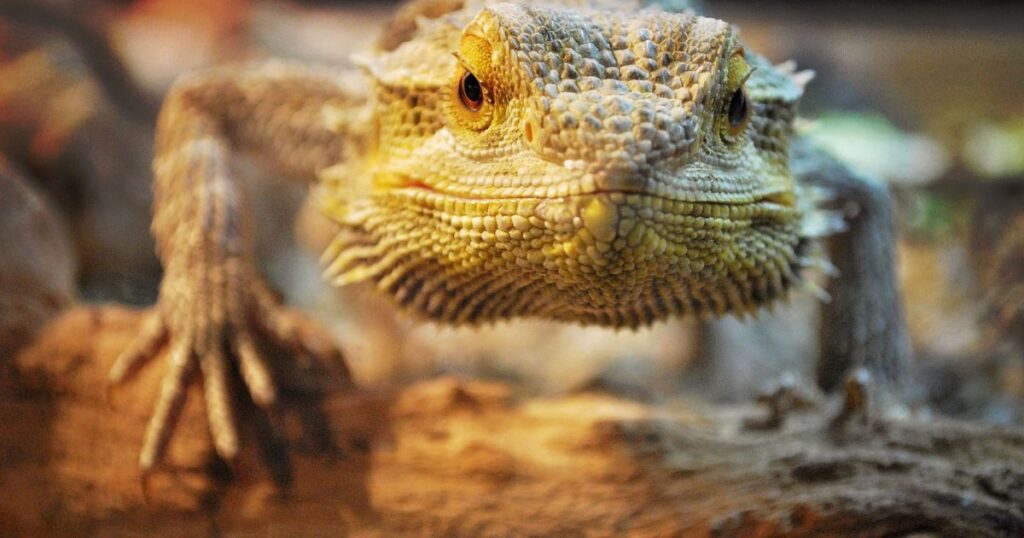
Prevention and Care
| Preventive Measure | How It Helps |
|---|---|
| Right Temperature and Humidity | Creates a comfortable environment for the dragon |
| Clean Habitat | Prevents growth of bacteria and fungi |
| Balanced Diet | Boosts the dragon’s immune system |
| Fresh Water | Keeps the dragon hydrated and helps flush out toxins |
Prevention, as they say, is better than cure, and this holds true for our bearded buddies’ respiratory health too. It’s about taking the right steps, right from the start, to ensure your dragon’s respiratory health is always in top shape.
From setting up the perfect dragon den to regular health checks, there’s a lot we can do to keep our dragons breathing easy. It’s about maintaining the right temperature and humidity, about keeping their habitat clean and well-ventilated. It’s about providing them with a balanced diet and plenty of fresh water.
One common misconception I’ve come across is that bearded dragons don’t need much attention when it comes to their respiratory health. Some people think that as long as their dragon is eating and moving, everything’s fine. But that’s not always the case. Respiratory issues can creep up subtly, and early detection is key. In my blog, I try to emphasize this point and provide practical tips to help owners monitor and maintain their dragon’s respiratory health.
So, let’s roll up our sleeves and get down to ensuring our dragons have the healthiest lungs in the land! It’s not just about treating issues as they arise, but about preventing them in the first place. And with the right care and attention, we can do just that!
Tips for Maintaining a Clean Habitat
- Clean the tank regularly
- Use a reptile-safe disinfectant
- Replace substrate as needed
- Regularly clean and disinfect food and water dishes
- Remove uneaten food and waste promptly
When to Consult a Vet
| Symptom | Action |
|---|---|
| Fast Breathing | Consult a vet immediately |
| Lethargy | Monitor the dragon and consult a vet if it continues |
| Loss of Appetite | Consult a vet if it persists for more than a few days |
| Open-Mouth Breathing | Consult a vet immediately |
| Wheezing or Clicking Sounds | Consult a vet immediately |
Just as our breath is the rhythm of our life, so is it for our bearded dragons. Let’s ensure they breathe easy, always.
Conclusion
So there you have it, dragon lovers, the lowdown on keeping our bearded buddies’ respiratory health in check. We’ve journeyed through the world of bearded dragon respiratory health, explored common issues and their causes, and looked at ways to prevent and care for these issues.
Now that you’re armed with this knowledge, it’s time to turn it into action for your scaly friend’s health. It’s time to put these tips into practice, to ensure your dragon is breathing easy and living life to the fullest.
And with that, we come to the end of our adventure. But remember, every breath your dragon takes is a testament to your care, so let’s make each one count! Here’s to happy, healthy dragons and the humans who love them!
If you want to learn more about bearded dragon care, check out the Bearded Dragon Care category. And don’t forget to check out my index page on Bearded Dragon Health Issues.
Other pages of interest: Bearded dragon reproductive disease and concerns and Bearded dragon shedding problems and skin conditions
Disclaimer: This article is intended for informational purposes only. It is not meant to be a substitute for professional veterinary advice, diagnosis, or treatment. Always seek the advice of your veterinarian with any questions you may have regarding the medical condition of your pet.
Frequently Asked Questions
What are the signs of good respiratory health in a bearded dragon?
A healthy bearded dragon will have regular breathing, clear nostrils, and an active behavior. They’ll also have a good appetite and show interest in their usual activities.
What are some common respiratory issues in bearded dragons?
Bearded dragons can face respiratory issues like respiratory infections, allergies, and colds. Symptoms can include wheezing, gasping, loss of appetite, and lethargy.
What causes respiratory issues in bearded dragons?
Several factors can lead to respiratory issues in bearded dragons. These include poor ventilation, low temperatures, high humidity, and a dirty habitat.
How can I prevent respiratory issues in my bearded dragon?
You can prevent respiratory issues by maintaining the right temperature and humidity in your dragon’s habitat, keeping the habitat clean and well-ventilated, and providing a balanced diet and fresh water.
When should I consult a vet for my bearded dragon’s respiratory health?
If you notice symptoms like fast breathing, lethargy, loss of appetite, open-mouth breathing, or wheezing/clicking sounds, it’s best to consult a vet immediately.
